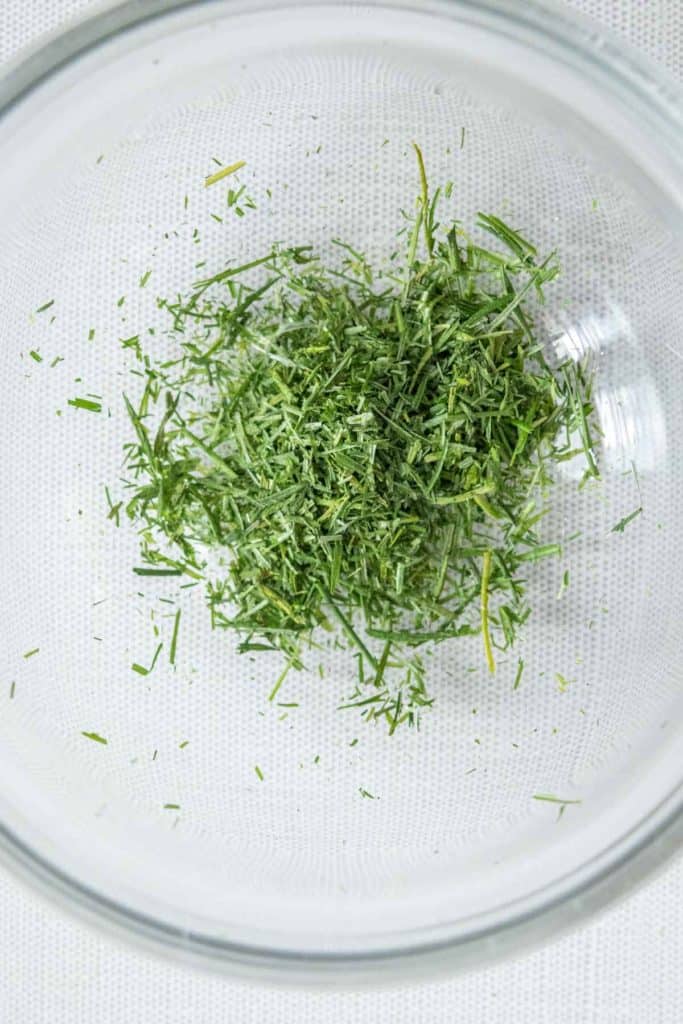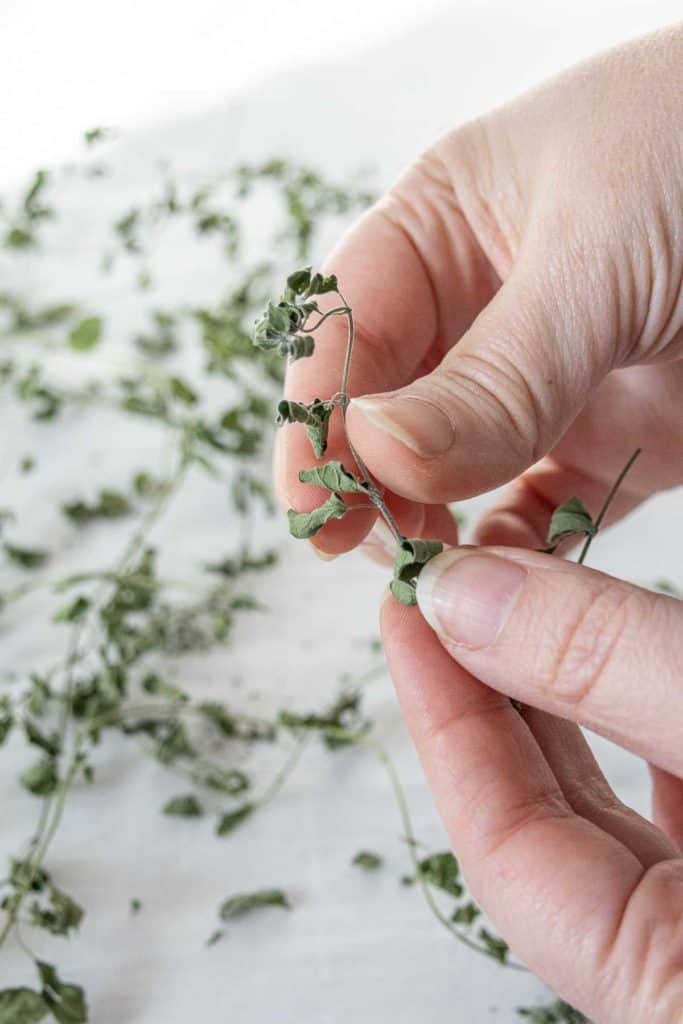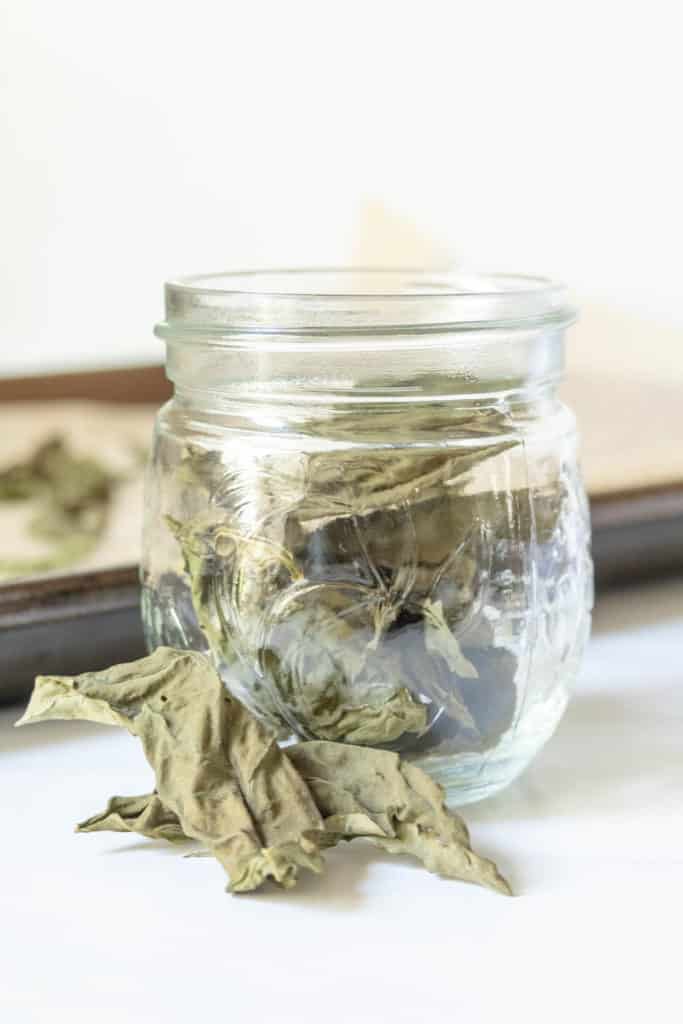This post contains affiliate links and may earn commissions on recommended products. As an Amazon Associate, I earn from qualifying purchases.
Learn how to dry herbs using three easy ways! Extend the flavor of your favorite fresh herbs and save money by drying them at home.
Do you have an herb garden? One of my favorite things is being able to pop outside and get fresh herbs for dinner.
Living in the Midwest, though, I only have a limited time for enjoying those fresh herbs.
But I don’t let them go to waste — I dry as many herbs as I can to extend that flavor well into the winter.
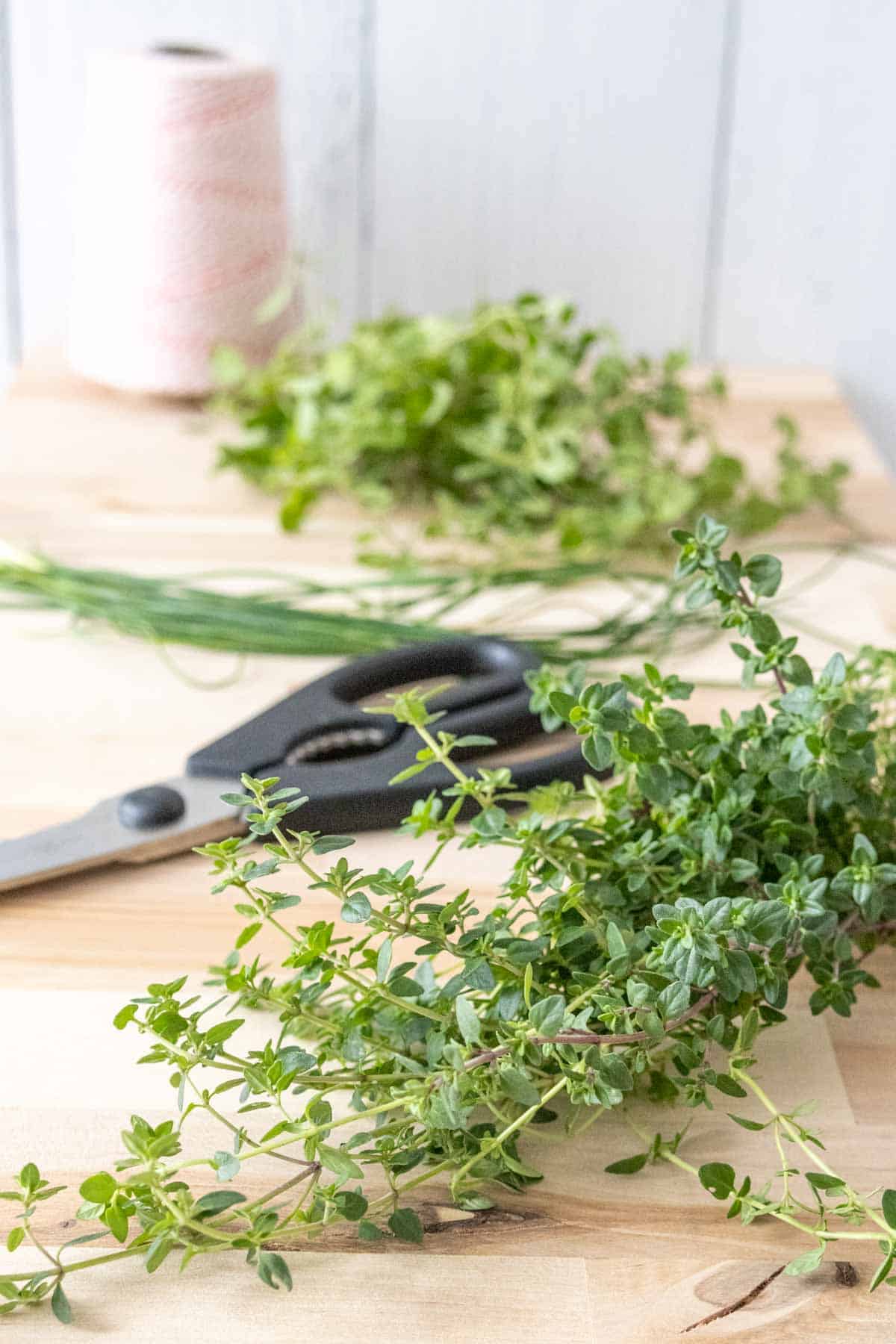
Drying herbs is very simple, and you don’t need any special tools like a dehydrator.
All you need is an oven, a sheet pan, and a little bit of time!
Choosing fresh herbs for drying
You don’t need to wait until the end of the season to dry your herbs. When I can, I harvest and dry my herbs both during the high season and right before it gets too cold for them to continue growing.
When choosing your herbs, make sure they are bright in color and not wilted. They should feel “fluffy” or somewhat plump.
If drying in the middle of the season, look for the herbs that have at least 4 inches of growth so the plant can continue to flourish after you trim it.
Harvest the herbs just above a set of leaves. It will continue to grow from this spot.
For herbs that don’t have leaf sets, such as chives, you can snip off near the bottom.
Some don’t recommend drying the more delicate leafy herbs, but why not! Simply be more watchful during the drying process to avoid drying too much.
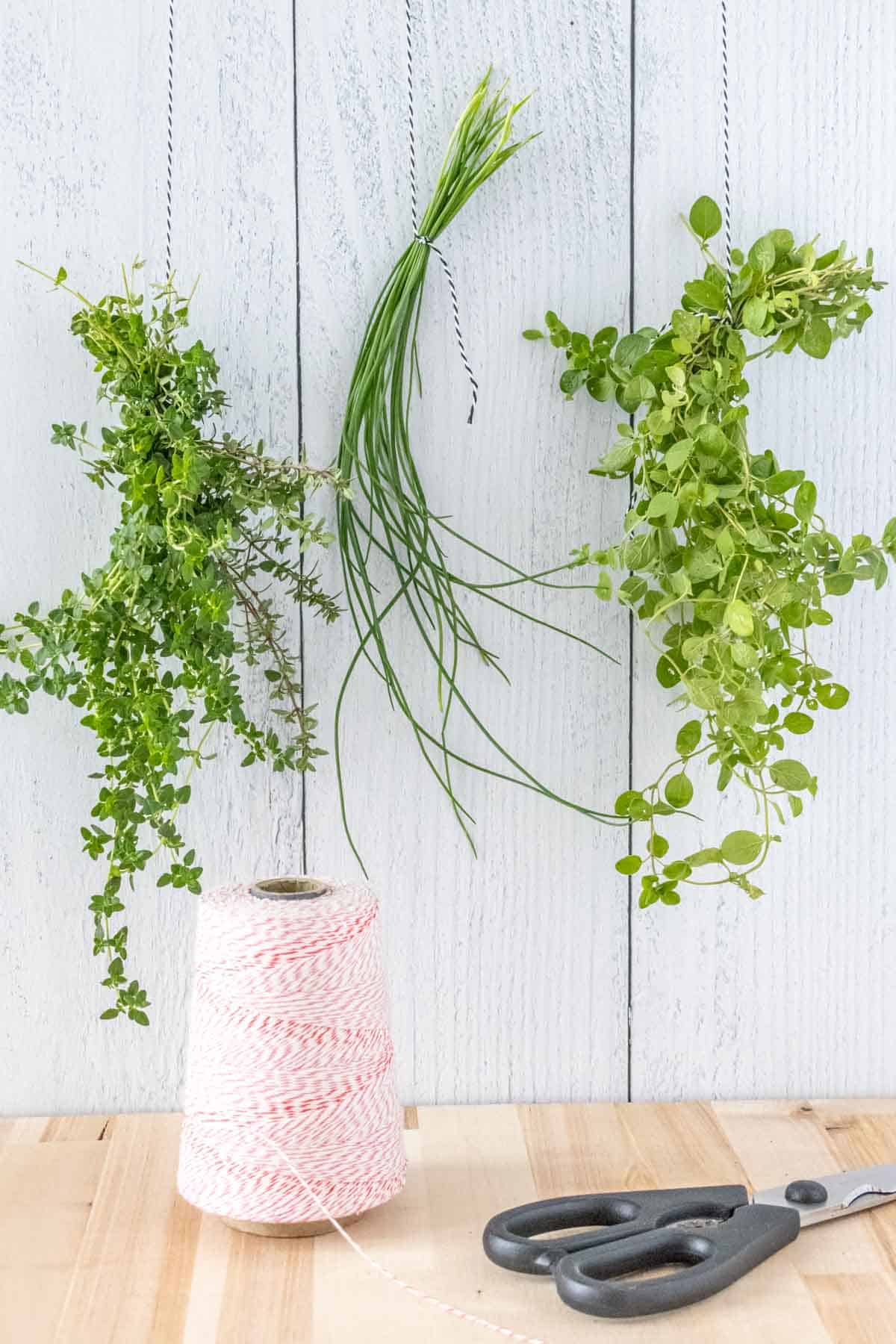
How to dry fresh herbs
To dry your herbs, you can do one of three methods: hang drying, oven drying, or microwave drying.
For all methods, gently wash your herbs. Pat dry with a kitchen towel or paper towel, removing as much moisture as possible.
Discard any wilted or slimy leaves, stem pieces, or other leafy bits from outside.
If air drying, gather the herb into a bundle. You can keep the bundles separate by herb, or dry complementary herbs together in one bundle, like oregano and marjoram.
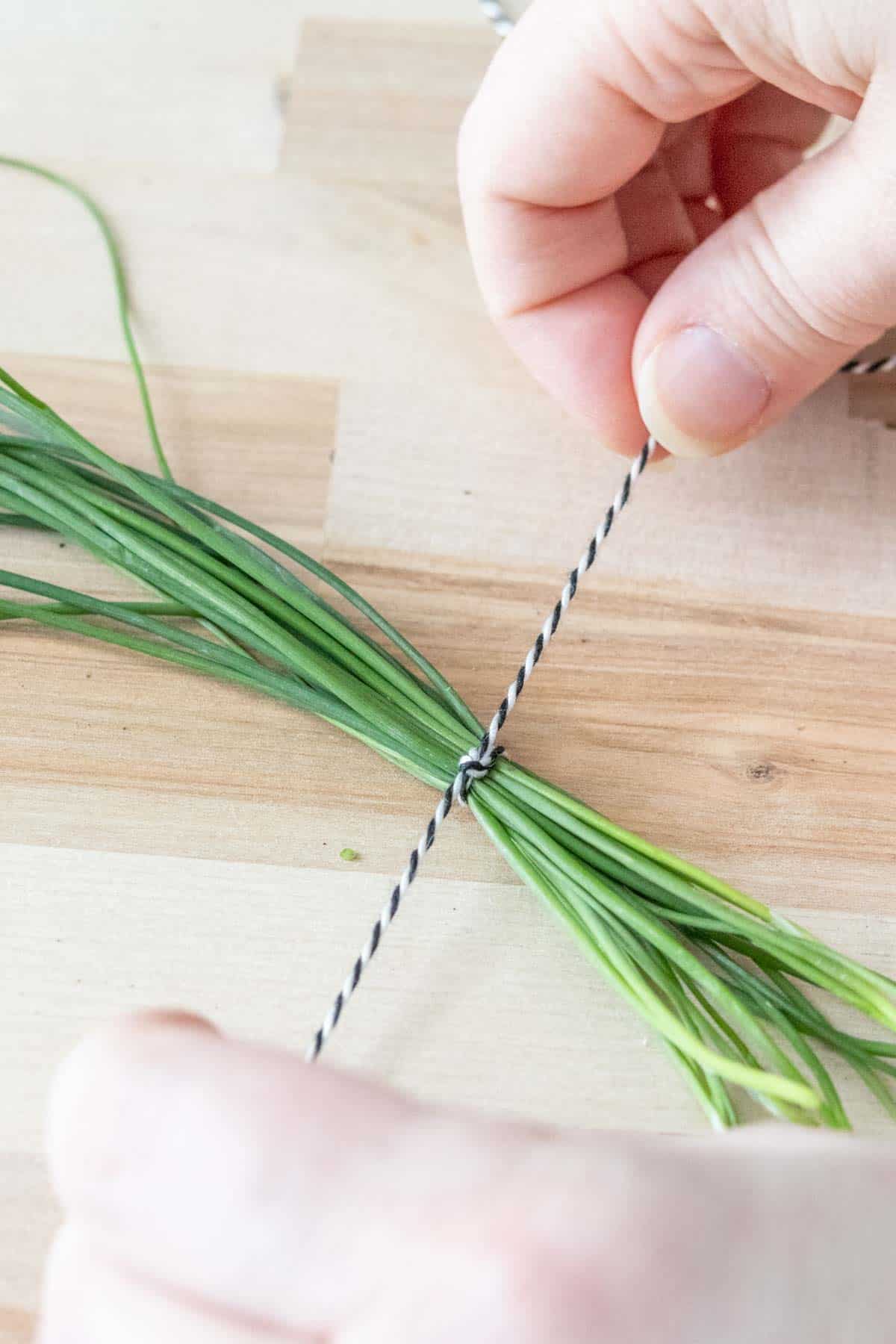
Tie the bundle together using kitchen twine. You can make a loop in the twine to hang it, or hang using a clip.
Hang the bundle in a cool, dry place such as a pantry. If you can hang it so there is some air circulation on all sides, even better!
Depending on the moisture content of the herb, it can take anywhere from 3 days to 2 weeks to dry fully.
How to dry herbs in the oven
Turn your oven as low as it can go, usually somewhere between 170°F and 180°F.
Line a baking sheet with parchment paper. This isn’t strictly necessary, but will help with collecting the dried leaves.
Spread the herb stems on the baking sheet in a single layer. If drying leafy herbs like sage or basil, I remove the leaves from the stems first.
Place in the oven and bake for about 1 hour, checking every 15-20 minutes for dryness.
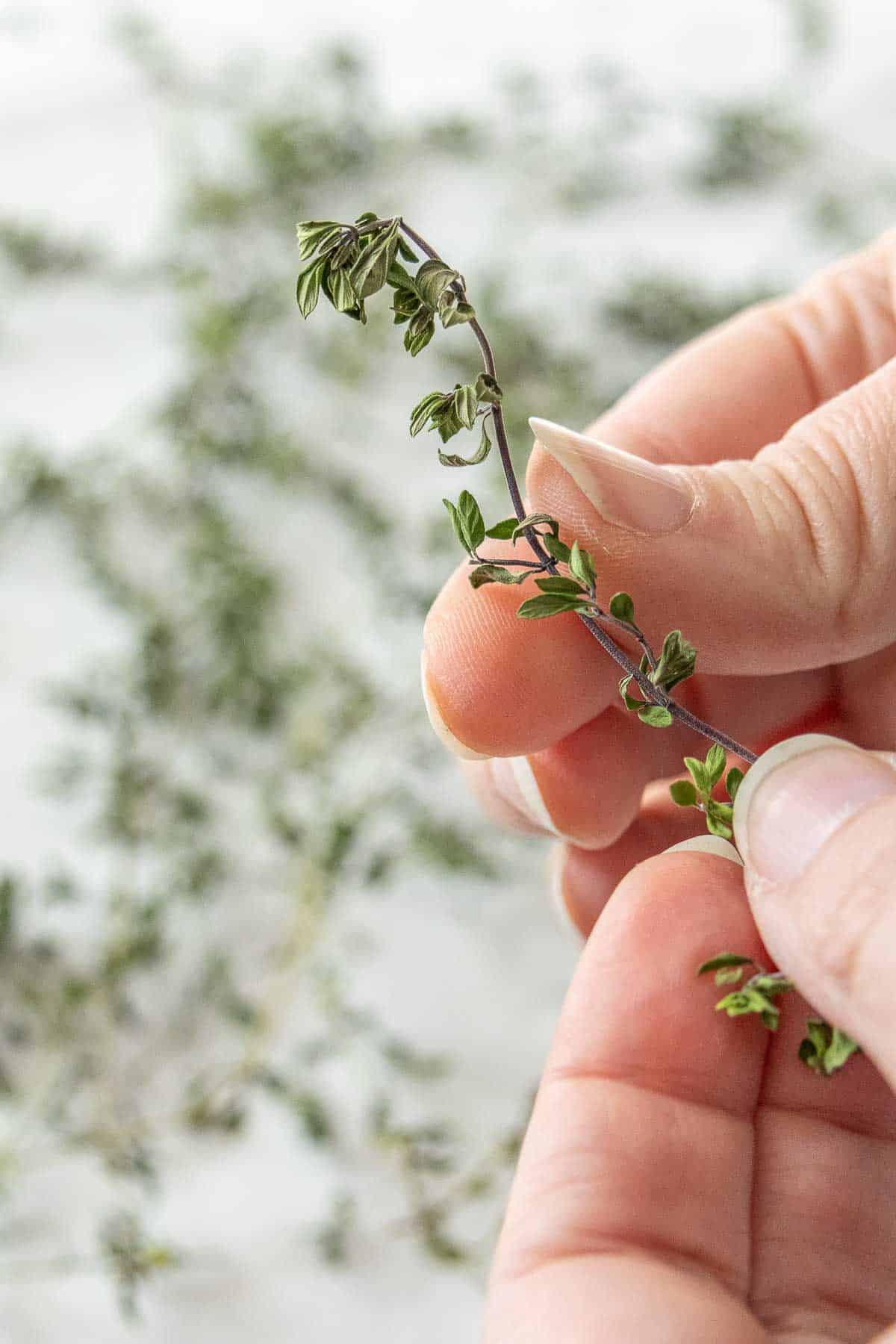
Some herbs will dry very quickly, so be sure to remove them as soon as they are dried. The leaves should crumble easily between your fingers.
Let the herbs cool completely (they will dry even more while cooling), then remove from the stems and store in a spice jar.
How to dry herbs in the microwave
I personally don’t like to dry herbs in the microwave, as the timing can vary so much.
However, if you want to go with this method, here’s how to do it.
Place the herbs on a microwaveable plate in a single layer, then place a paper towel on top.
Microwave in 20-30 second intervals, checking for dryness after each time. You can also flip over the herb stems for even drying.
Depending on the herb, it will take anywhere from 45 seconds to 2 minutes to dry completely.
Storage tips
Dried herbs will keep in an airtight container, stored in a cool, dry place, for about a year or so.
Glass spice jars are best for storing herbs, but you can also use a small plastic container or zip-top bag.
Your herbs will last longer if you do not hold it directly over a hot pot while pouring the contents in. This can introduce moisture into the jar. Instead, measure the herbs into a small bowl or measuring spoon and then add it.
Replace your dried herbs when they no longer have an aroma.
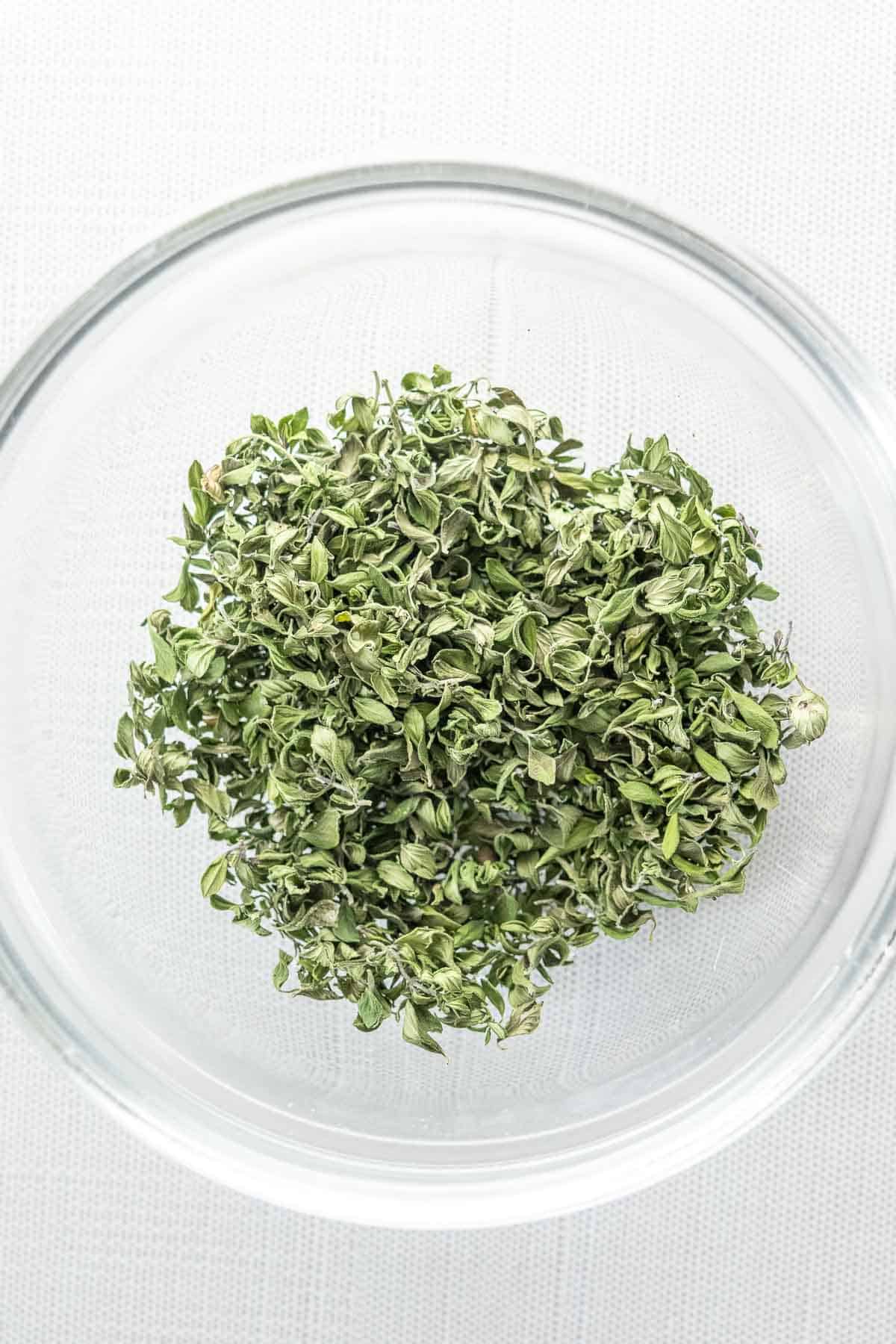
How to use your dried herbs
Dried herbs are incredibly versatile and can be used to add flavor to any dish.
Use them in place of fresh herbs such as in ranch dressing or herb pizza dough.
A rule of thumb for swapping dried herbs to fresh is to use one-third less.
For any recipe calling for 1 tablespoon of fresh herb, use 1 teaspoon dried herb instead. From there, you can adjust based on your tastes.
Drying herbs is such an economical and easy way to enjoy their flavor all year. Try it yourself and see!
Love this recipe? Please leave a 5-star review below!
It means so much when you enjoy my recipes, so let me know how it goes and leave a comment if you have any questions.
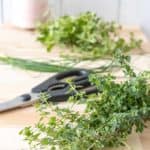
How to Dry Herbs
Ingredients
- 1 bunch fresh herbs
Instructions
- Rinse herbs gently, removing any dirt or slimy leaves. Pat dry with a towel.
To hang dry
- Gather the herbs together into a bundle. Cut a length of kitchen twine and tie a knot around one end of the herb. Tie a loop around the other end and hang in a cool, dry place.
- It will take between 3 days and 3 weeks for the herb to fully dry.
To oven dry
- Turn your oven as low as it can go. (For my oven this is 170°F.)
- Spread the herbs in a single layer on a parchment-lined baking sheet. Place in the oven and leave the door ajar.
- Check the herbs every 15-20 minutes for dryness, pinching a leaf or two between your fingers to see if it crumbles. The herbs should be fully dry within 1 hour.
To microwave dry
- Place herbs in a single layer on a microwave-safe plate, then place a paper towel on top.
- Microwave in 20-30 second bursts, checking for dryness after each interval. Flip the stems over to help them dry evenly. It will take between 45 seconds and 2 minutes to dry completely.
Once dry
- When herb is dry, strip the leaves and place in a glass jar. Label and store in a cool, dry place for up to 1 year. Once the herb loses its aroma, it's time for a new batch.
Nutrition
Nutrition information is provided as a courtesy and is an estimate based on online calculators. Any nutritional information found on Stetted should be used as a general guideline only.

About Megan
I learned how to cook by exploring seasonal ingredients, and you can too! Meal time shouldn’t be stressful or complicated, and with fresh ingredients and easy methods, I’m here to help you enjoy the time spent in the kitchen. Read more…


